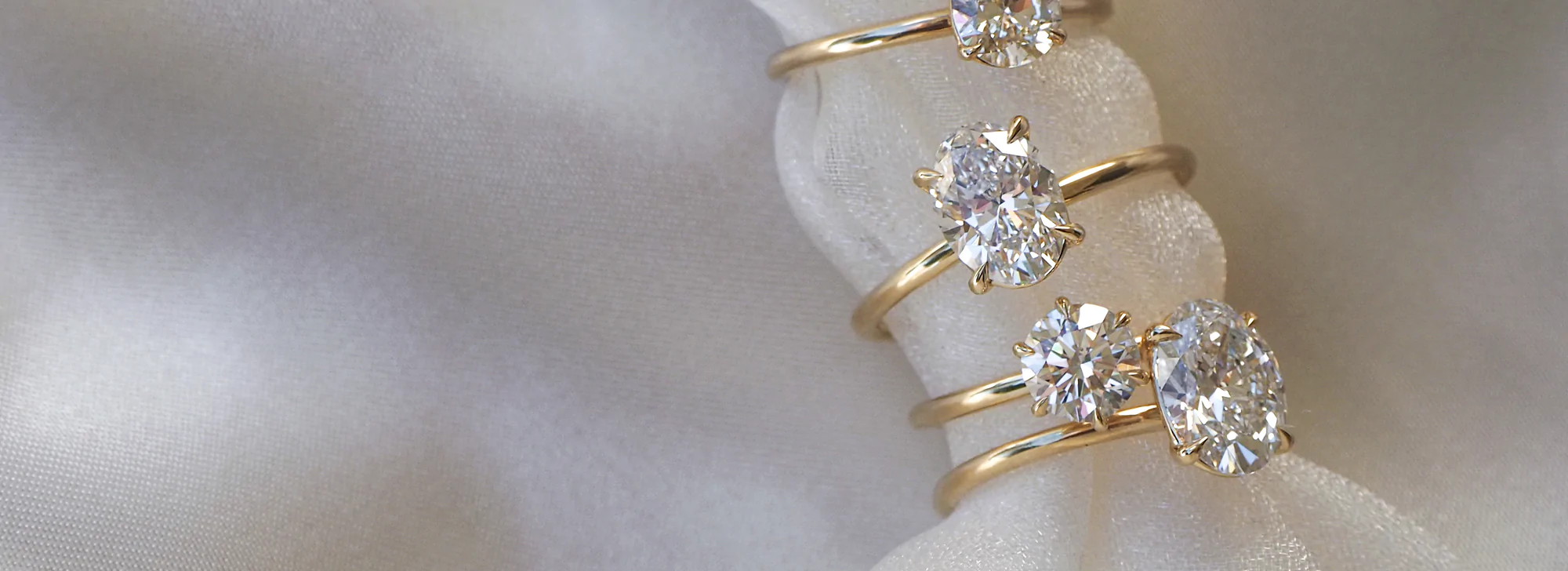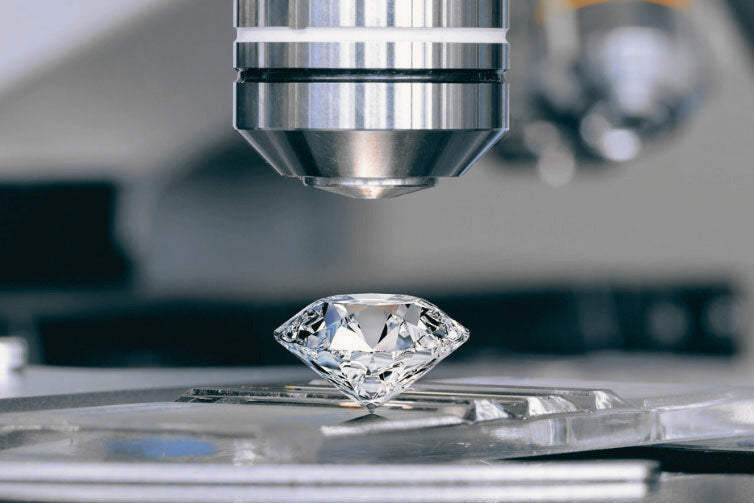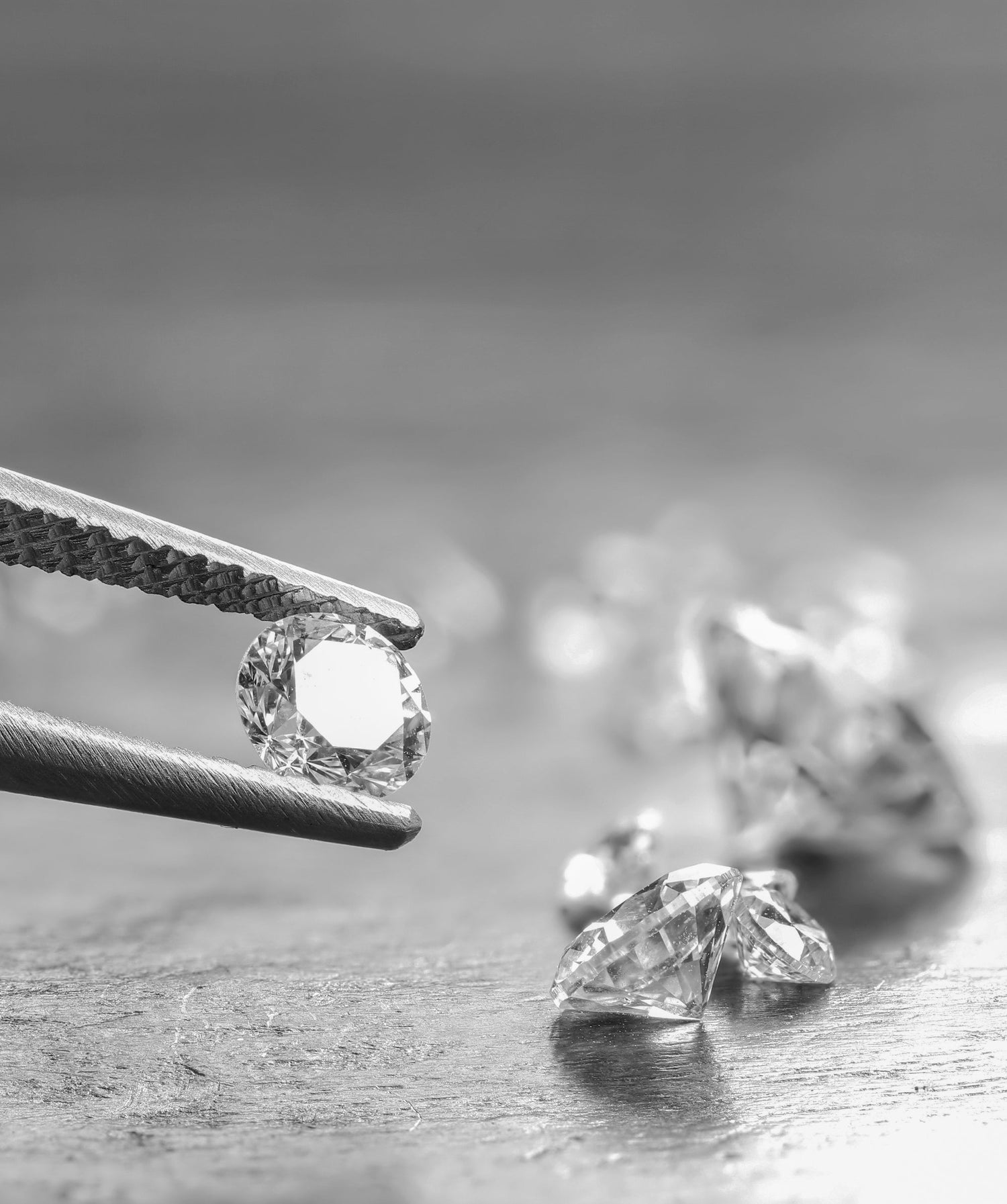
Lab-Grown Diamonds
Lab-grown diamonds are known for being environmentally friendly, ethically sourced, and more affordable than natural diamonds. They also have the same physical and chemical properties as natural diamonds, making them a popular alternative in the jewelry industry.
Collapsible content
What are lab grown diamonds?
Lab grown diamonds are diamonds that are grown in a laboratory environment using advanced technological processes.
They have the same physical, chemical, and optical properties as natural diamonds, but are created in a matter of weeks or months rather than millions of years.
They are also generally more affordable than natural diamonds, and are considered to be a more sustainable and ethical alternative.
The only difference between the two is point of origin.
Lab-grown diamonds share an identical growing process to natural diamonds. They form first as carbon atoms under high temperature and immense pressure, then bond together to grow a crystalline lattice structure.
Once fully formed, they are cut and polished to reveal maximum brilliance.
Like natural diamonds, lab-grown diamonds come in a variety of color and clarity grades.
What is the difference between a natural diamond and a lab grown diamond?
A natural diamond is formed in the Earth's mantle over millions of years through natural processes, while a lab-grown diamond is created in a laboratory using advanced technological processes.
Both have the same physical and chemical properties, but lab-grown diamonds are typically less expensive and have less impact on the environment than natural diamonds.
Why choose a lab-grown diamond?
There are several reasons why someone might choose a lab-grown diamond.
These diamonds are often more affordable than natural diamonds, and they are also considered to be more environmentally friendly.
Additionally, lab-grown diamonds are high quality and have the same physical and chemical properties as natural diamonds.
Are lab-grown diamond real diamond?
Yes, lab-created diamonds are real diamonds.
They have the same physical, chemical, and optical properties as natural diamonds, but are created in a laboratory instead of being mined from the earth.
They both start as carbon seeds and are pressurized to life. In fact, the Federal Trade Commission recently changed the definition of a diamond by removing the word natural and the GIA grades them the same way.
How can you tell if they are lab-grown diamonds?
You can't. Even expert gemologists and experienced diamond traders cannot tell the difference between lab-grown and natural diamonds with the naked eye.
Accuracy, however, is never guaranteed.
How long does it take to grow a lab-diamond?
The time it takes to grow a lab-grown diamond depends on the size and complexity of the diamond being produced.
However, it can take anywhere from 6 to 10 weeks to grow a diamond in a laboratory setting. It is then cut and polished before being sold as loose diamonds or set in fine jewelry.
Are lab-grown diamonds certified?
Yes, lab-grown diamonds can be certified just like naturaldiamonds. They are graded and certified by independent gemological laboratories using the same standards asnatural diamonds.
How are lab grown diamonds made?
Lab-grown diamonds are formed using two main methods: High Pressure High Temperature (HPHT) and Chemical Vapor Deposition (CVD). Both methods can take several weeks to several months to produce a marketable diamond.
Collapsible content

The HPHT method:
- A small diamond seed is placed in a metal solvent, such as pure iron.
- The solvent is subjected to extremely high pressure and temperature, up to 1,500°C and 5 GPa.
- The carbon atoms in the solvent are forced onto the diamond seed, causing it to grow layer-by-layer into a larger diamond crystal.
The CVD method:
- A diamond seed is placed in a vacuum chamber.
- A mixture of gases, usually methane and hydrogen, is introduced into the chamber.
- The gases are ionized using microwaves or other methods, breaking them down into their component atoms.
- The carbon atoms in the gas are attracted to the diamond seed and begin to deposit on its surface, layer-by-layer, until a larger diamond crystal is formed.

What are the 7 most important things to know about lab-grown diamonds?
- Lab-grown diamonds are created in a laboratory using advanced technology.
- They have the same physical and chemical properties as natural diamonds and are a more ethical and sustainable option.
- Lab-grown diamonds are typically less expensive than natural diamonds, making them an attractive option for those on a budget.
- They are also free of any environmental or social issues associated with traditional diamond mining.
- Lab-grown diamonds are graded using the same criteria as natural diamonds, including the 4 Cs: carat weight, color, clarity, and cut.
- They are available in a wide range of sizes, shapes, and colors, including fancy colors like pink, blue, and yellow.
- Lab-grown diamonds are a popular choice for engagement rings and other types of jewelry.
3 Reasons to Buy Lab-Grown Diamonds
-

Better for the Environment
Lab-grown diamonds have a smaller environmental impact than natural diamonds, as they do not require the excavation and processing of earth to extract them. This can help reduce the adverse effects of diamond mining, such as habitat destruction, water pollution, and carbon emissions.
-

Identical to Natual Diamonds
Lab-grown diamonds are chemically, physically, and optically identical to natural diamonds, meaning they have the same properties and characteristics. This means you can get a diamond that is just as beautiful and durable as a natural diamond but at a more affordable price.
-

Budget-friendly
Lab-grown diamonds are typically more affordable than natural diamonds, as they do not incur the additional costs associated with mining and transportation. This means you can get a beautiful, high-quality diamond at a lower price.

